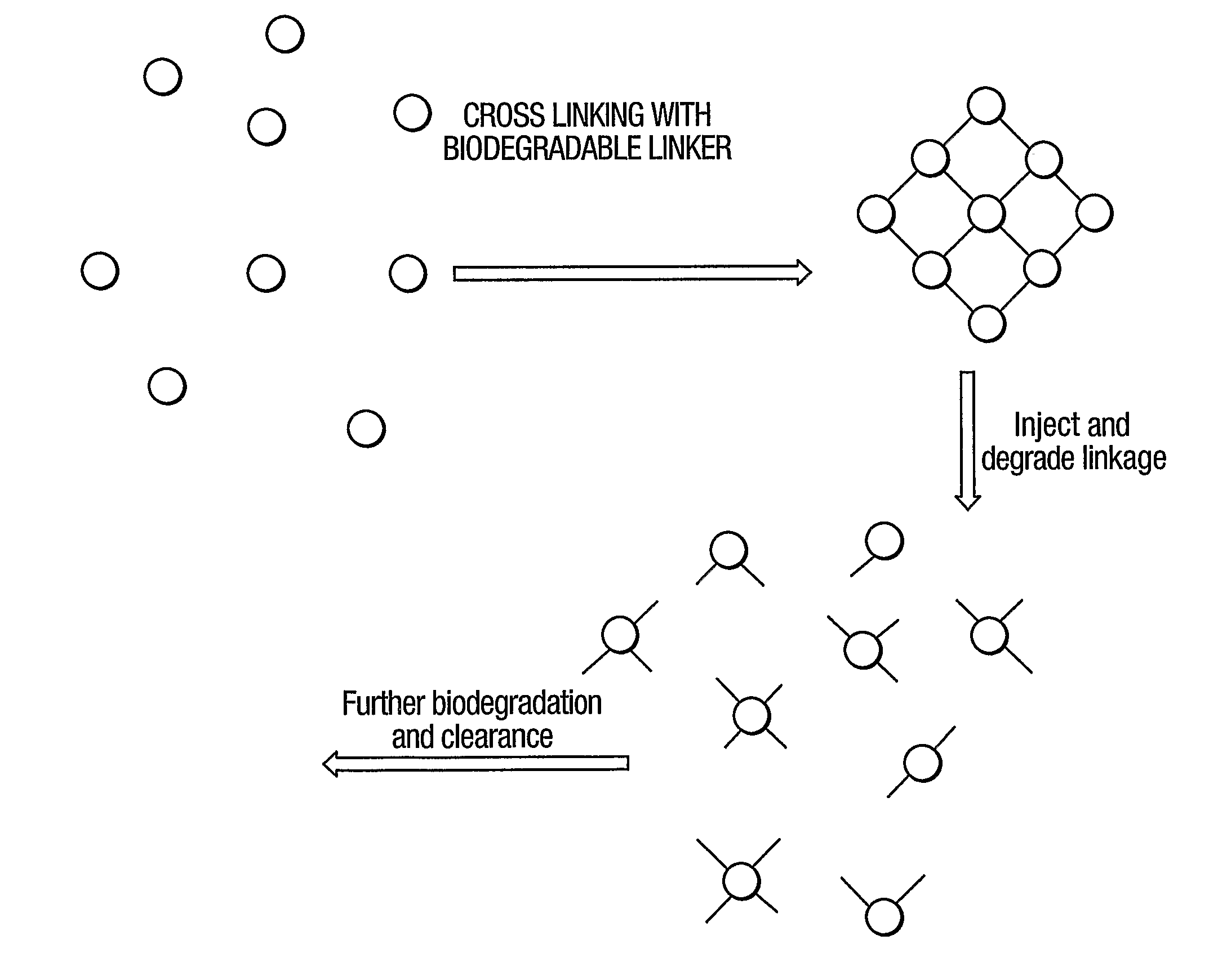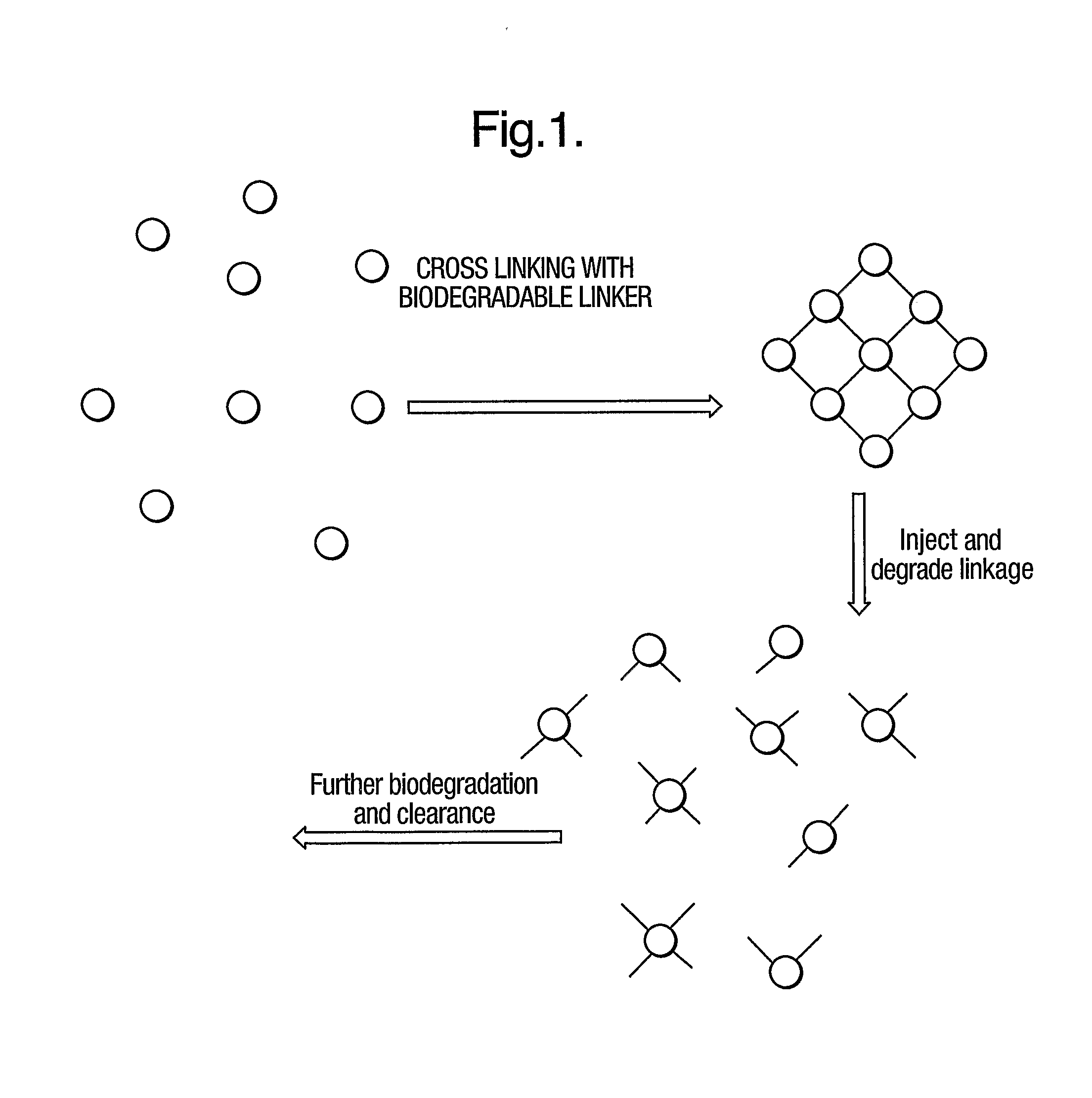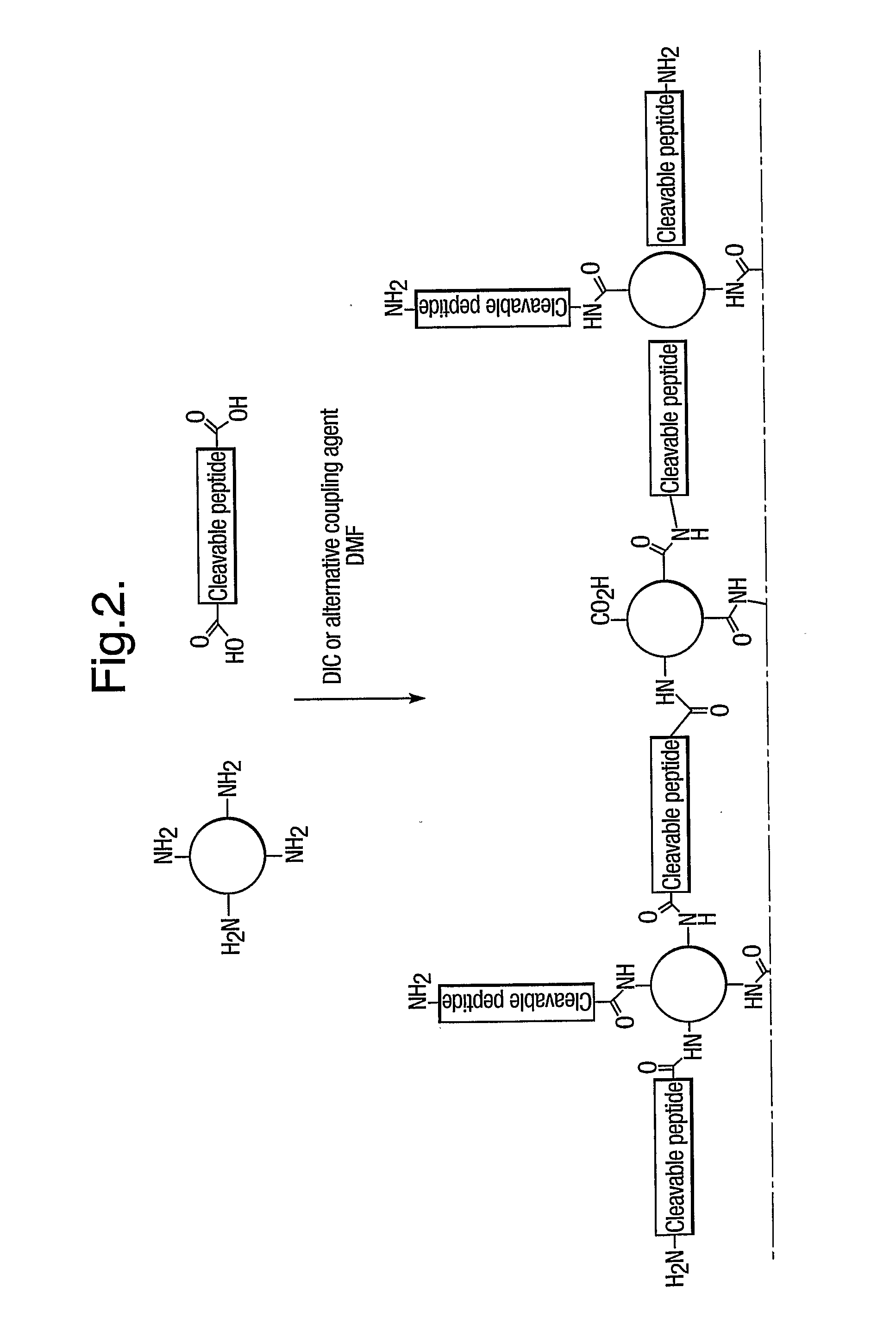Multimeric Particles
a multi-meric particle and metal technology, applied in the direction of diagnostic recording/measuring, biocide, genetic material ingredients, etc., can solve the problems of reducing the quality of mri scans, spios is difficult to accurately target a particular region, and both types of particles suffer from disadvantages, so as to enhance the contrast of an image
- Summary
- Abstract
- Description
- Claims
- Application Information
AI Technical Summary
Benefits of technology
Problems solved by technology
Method used
Image
Examples
example 1
Preparation of Multimeric Particles
[0072]Amine-functionalised particles (20-40 nm) were stirred with succinic anhydride for 24 h and purified by magnetic affinity. The particles were concentrated by vivaspin and reacted with 2-ethoxy-1-ethoxycarbonyl-1,2-dihydroquinoline (EEDQ). The very concentrated solution of these activated particles was vigorously mixed with a solution of bovine serum albumin in water (100 mg / mL). Resulting particles were retrieved by magnetic affinity purification and size-selected using ultrafiltration. Laser scattering analysis indicated the resultant particulate solution to be in the 0.5 to 1 μm size range.
[0073]This exemplary process can be readily modified in order to produce other types of multimeric particles within the scope of the invention. For example, where the linker groups are or contain peptides, the particles could be prepared by mixing the relevant peptide or peptides with amine-terminated dextran-coated iron oxide particles and an agent to pr...
example 2
Preparation of Multimeric Particles with a Thrombin Cleavage Site
[0076]Multimeric particles with a thrombin cleavage site have been generated; the multimeric particles are degradable to their constituent iron-containing particles.
Modification of Particles with Peptide
[0077]In order to create a linkable particle scaffold, the particles had to be modified with a thrombin-cleavable peptide. The peptide employed, whose sequence is shown below, contained (i) glycine spacer units, (ii) the known thrombin cleavage sequence Phe-Val-Arg in the middle, and (iii) a C-terminal glutamic acid allowing for facile linkage through the sidechain using a rink amide resin.
[0078]Fmoc-Gly-Gly-Gly-Gly-Phe-Val-Arg-Gly-Gly-Gly-Glu-NHAc
[0079]This peptide was synthesised on a 1 g scale on an automated peptide synthesiser.
Cross-Linking of the Particles
[0080]Peptide couplings are most readily performed in DMF using, for example, HOBT and DIC as coupling agents. It was thus explored whether the particles were st...
PUM
| Property | Measurement | Unit |
|---|---|---|
| particle size | aaaaa | aaaaa |
| particle size | aaaaa | aaaaa |
| particle size | aaaaa | aaaaa |
Abstract
Description
Claims
Application Information
 Login to View More
Login to View More - R&D
- Intellectual Property
- Life Sciences
- Materials
- Tech Scout
- Unparalleled Data Quality
- Higher Quality Content
- 60% Fewer Hallucinations
Browse by: Latest US Patents, China's latest patents, Technical Efficacy Thesaurus, Application Domain, Technology Topic, Popular Technical Reports.
© 2025 PatSnap. All rights reserved.Legal|Privacy policy|Modern Slavery Act Transparency Statement|Sitemap|About US| Contact US: help@patsnap.com



